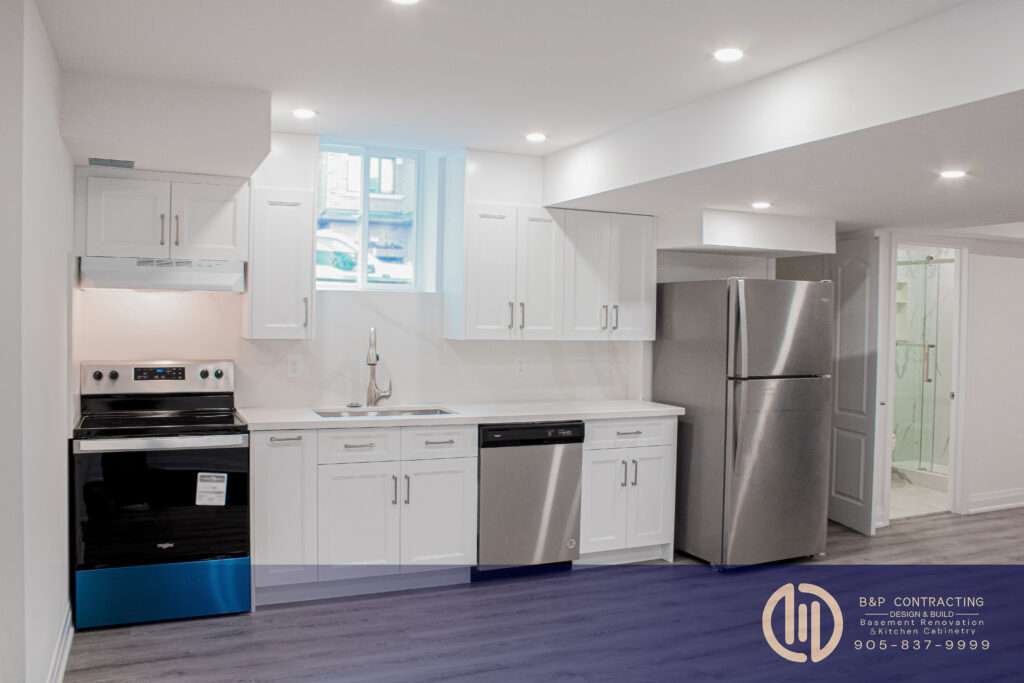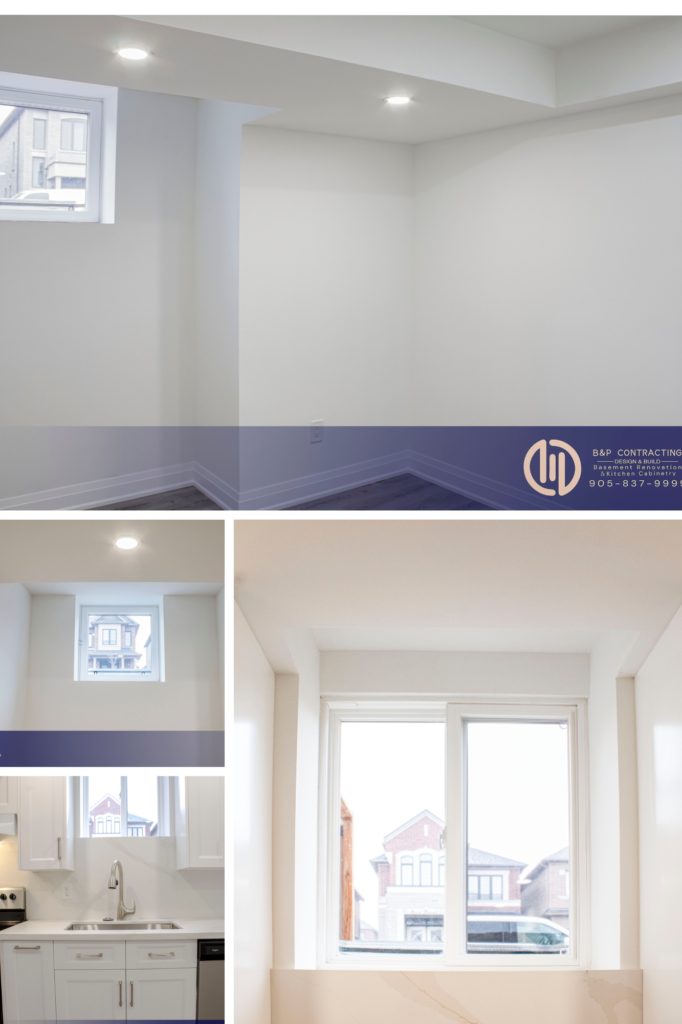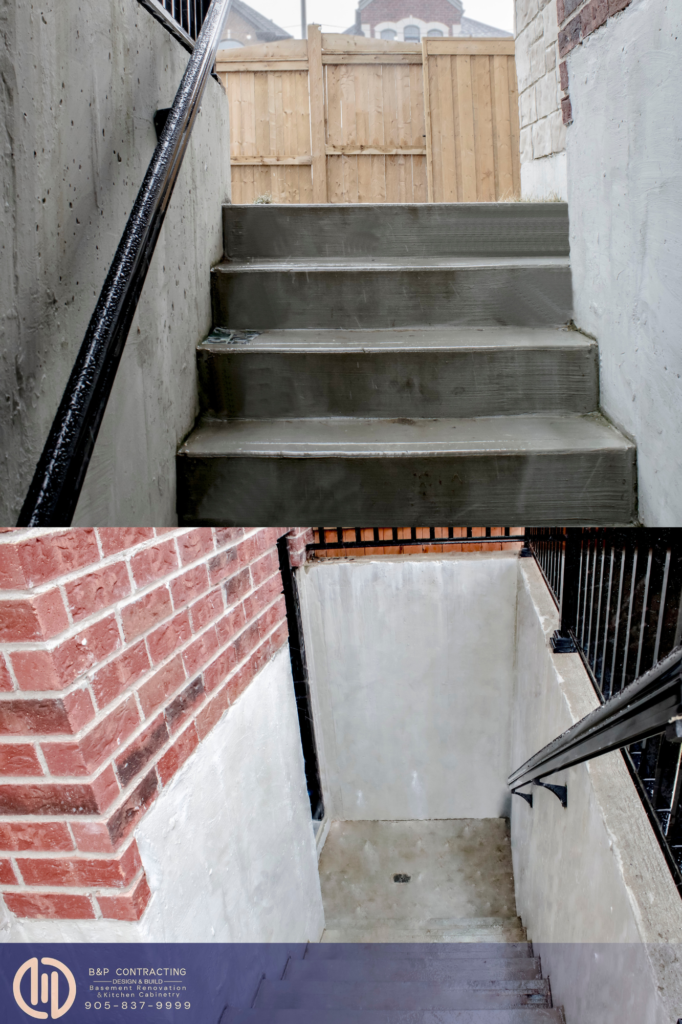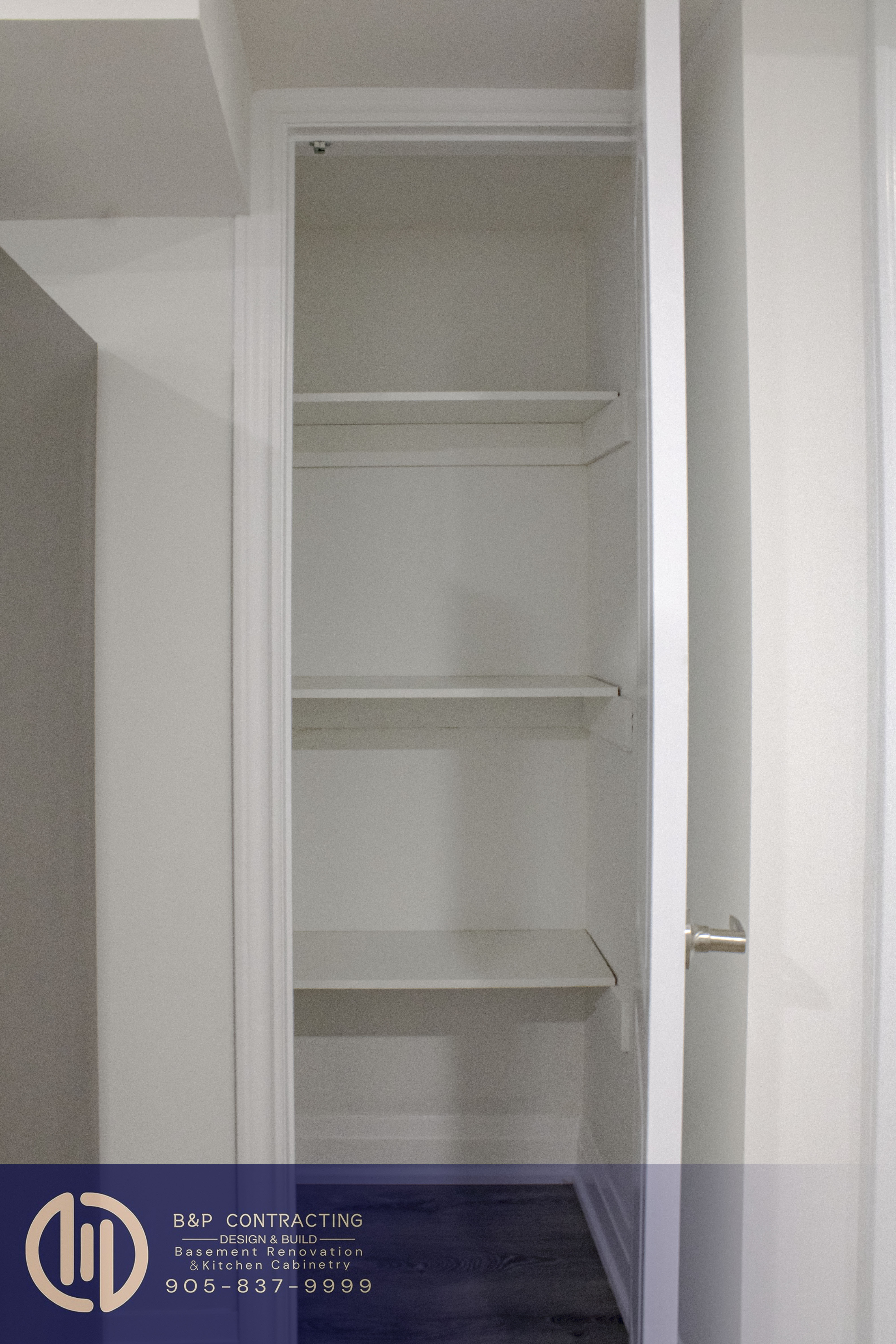What to Consider When Designing a Rental Basement
Designing a rental basement requires a blend of creativity, practicality, and adherence to local regulations. A well-designed basement can attract quality tenants, increase property value, and provide a comfortable living space. Here are the key considerations to keep in mind, illustrated by an example project in Whitby by BNP Contracting.
1. Layout and Space Optimization
- Open Concept Design: An open-concept layout can make the space feel larger and more inviting.
- Functional Zones: Define functional zones for living, dining, and sleeping to create a cohesive and practical layout.
For example, we may observe a full basement renovation completed earlier this year by B&P Contracting. Before working with our company, this homeowner and potential renter possessed a basement with limited natural light and outdated fixtures. The basement lacked essential amenities such as a full kitchen and a proper bathroom, reducing its potential as a livable space.
Open Concept Design: An open-concept layout created a sense of spaciousness and enhanced the flow of the space. This common concept is especially important for designing basements with otherwise limited space.

Enhanced Functionality: The addition of a full kitchen with modern appliances, a spacious bathroom, and a separate laundry area greatly improved the functionality and appeal of the basement. This not only creates a modern and elegant basement area, but creates a fully-functional and live-able basement for full families to occupy.
2. Natural Light and Lighting
- Windows: Install larger windows or egress windows to increase natural light and comply with safety requirements.
We may observe this safety requirement in the aforementioned project in multiple places throughout the entire basement.
- Lighting Fixtures: Use a combination of overhead lighting, task lighting, and accent lighting to create a well-lit, inviting space.
Here, we can see strategic placement of pot lights to not only complement the room, but to be properly placed in the overhanging support beams, juxtaposed to an egress window letting in natural light.
3. Compliance with Local Regulations
- Building Codes: Ensure that the renovation complies with local building codes.
- Permits: Obtain all necessary permits before starting the renovation to avoid legal issues and ensure the work passes inspections.
4. Moisture and Waterproofing
- Waterproofing: Effective waterproofing is essential to prevent water damage.
- Moisture-Resistant Materials: Use moisture-resistant insulation and finishes to prevent mold growth and ensure a healthy living environment.


5. Separate Entrance
- Privacy: A separate entrance provides tenants with privacy and convenience.
- Accessibility: Ensure the entrance is easily accessible and well-lit for safety.
This basement featured a dedicated entrance for tenants ensuring the entrance is easily accessible and well-lit for safety.
6. Soundproofing
- Noise Reduction: Use soundproofing materials in walls, floors, and ceilings to minimize noise transfer between the basement and the rest of the house. This is crucial for tenant comfort.
7. HVAC and Ventilation
- Efficient Heating and Cooling: Upgrade the HVAC system to ensure efficient heating and cooling throughout the basement.
- Proper Ventilation: Ensure proper ventilation to maintain air quality and prevent moisture buildup.
8. Storage Solutions
- Ample Storage: Incorporate built-in storage solutions such as closets, shelves, and cabinets to maximize space and organization.
- Multi-Functional Furniture: Consider multi-functional furniture like storage ottomans or sofa beds to add extra storage and functionality.
9. Essential Amenities
- Kitchen: Include a full kitchen with modern appliances to make the basement a fully functional living space.
- Bathroom: A spacious, well-designed bathroom with modern fixtures is essential.
- Laundry: A separate laundry area adds convenience and appeal for tenants.
10. Finishes and Aesthetics
- Durable Materials: Use durable, easy-to-maintain materials for flooring, countertops, and cabinetry
- Neutral Colors: Choose neutral colors for walls and finishes to create a versatile and appealing space.
- Quality Fixtures: Invest in high-quality fixtures and finishes to enhance the overall look and durability of the space.

Designing a rental basement requires a strategic approach, focusing on compliance, functionality, and aesthetics. The Whitby basement renovation by BNP Contracting demonstrates how thoughtful design and quality workmanship can transform an underutilized space into a bright, modern, and fully functional rental unit. By considering these essential tips, you can create a rental basement that attracts quality tenants and enhances your property’s value.
